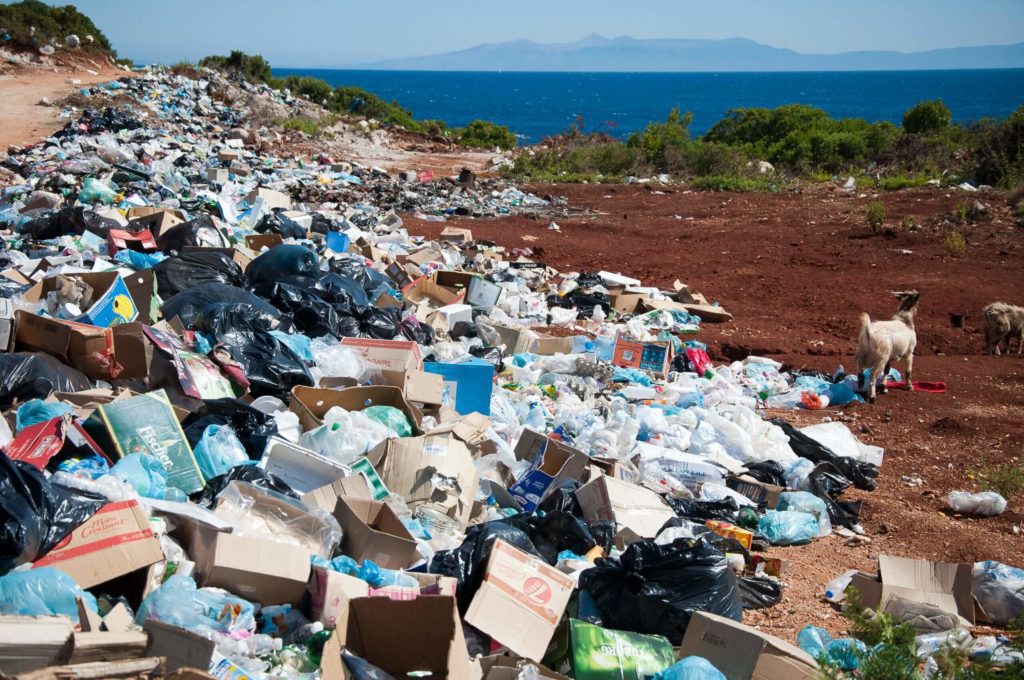Fighting Marine Litter In The Mediterranean
With the highest concentration of plastic pollution in the world, the Mediterranean is in dire need of collective conservation action.
The statistics show a critical situation in the Mediterranean Sea, with plastics accounting for 95 to 100% of total floating litter and over 50% of seabed litter, as was highlighted in the data shared by the Mediterranean Action Plan of the United Nations Environment Programme (UNEP/MAP). Single-use plastics play a big role in the pollution of marine areas and represent “more than 60% of the total recorded marine litter on beaches.”
“The Mediterranean is facing a triple crisis: pollution, biodiversity, and climate change,” Magali Outters told REVOLVE in an interview. The team leader of the Policy Area at MedWaves – the UNEP/MAP Regional Activity Centre for Sustainable Consumption and Production (SCP) – explained that “there is no single solution to solve the marine litter challenge.” Regulating plastics is difficult but it is all about finding a balance between regulatory frameworks, raising awareness, and public and private cooperation.
The tourism and fisheries sectors are essential to finding that balance and boosting change to prevent marine plastic pollution in the Mediterranean. Thomais Vlachogianni – Policy Officer at MIO ECSDE – highlighted that social innovation is key for that change to happen because it leads to doing things differently in a low resource-intensive way, as “social innovation leads to work with the tourism sector to minimize their plastic footprint.” He also warned that climate change impacts such as more frequent floods, storms, or heatwaves also lead to higher concentrations of marine litter and microplastics.
Outters and Vlachogianni joined other members of the Interreg MED Biodiversity Protection Community in the first-ever Mediterranean Pavilion at COP27. They participated in an event organized by the community where both of them highlighted the hidden costs of plastics in climate change and the invisible health risks impacts.

The effects of plastics on biodiversity are very visible. We all have in mind images of the loggerhead sea turtle (Caretta caretta) trapped in plastics. But the impacts of plastic chemicals on human health are invisible. “There are 13.000 substances linked to the production of plastics and a quarter is of concern to health,” Outters explained. She talked about the importance of transparency moving forward, stressing that although there is a general awareness about polymers in plastics, not so much is known about the chemicals in the material.
A common approach against marine litter
For the last six years, the Interreg MED community has been working to deploy the common framework of action developed under the Plastic Busters initiative, which sets out an action plan for fighting against marine litter “We need a common language, a harmonized methodological approach, to detect the presence of marine litter in the environment,” Fossi explained.
The project has been focusing its actions on marine protected areas (MPAs) in the Mediterranean. “Marine litter is undermining the climate resilience of marine ecosystems and this is why many MPAs are taking marine litter measures in order to enhance their adaptive capacities,” Thomais Vlachogianni explained.

Regional cooperation is key for tackling the marine litter challenge. For this reason, the Biodiversity Protection Community has put emphasis on collaborating with countries and projects that fall outside the Euro-Mediterranean region, such as the ENI CBC MED program. Marine litter can travel long distances so it is key to understand the invisible sea linkages that have effects on biodiversity.
“The strategy developed within the project is moving from the diagnosis of the impacts of marine litter in the environment to designing specific mitigation actions,” highlighted Fossi during the COP27 event. She went on to explain that this strategy is being transferred to Southern Mediterranean countries to enhance their actions in their fight against marine litter, concluding that “We really think that it would be essential that the strategy is incorporated and supported both in terms of marine strategies frameworks but even to support the UNEP/MAP and the IMAP Indicators.”
The United Nations Biodiversity Conference (COP15) – which took place in Montreal (Canada) one month after COP27 – ended on a positive note with the celebration of a new agreement: the Kunming-Montreal Global Biodiversity Framework (GBF). The GBF aims to address biodiversity loss, restore ecosystems and protect indigenous rights. The framework includes concrete measures to halt and reverse nature loss, including the target to protect 30% of the planet’s land and marine areas by 2030. It also proposes strategies for increasing finance for developing countries – a major sticking point during talks. Along with the loss and damage fund approved at COP27, it can act as a booster for reaching the sustainable development goals (SDGs) and tackling the biodiversity crisis in the Mediterranean.